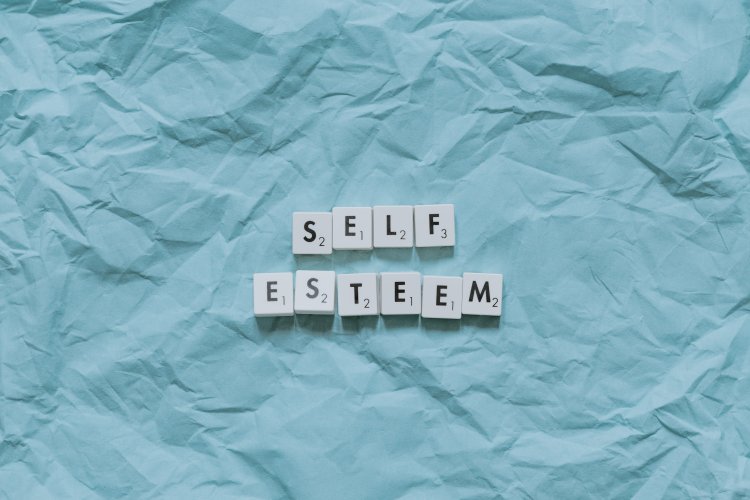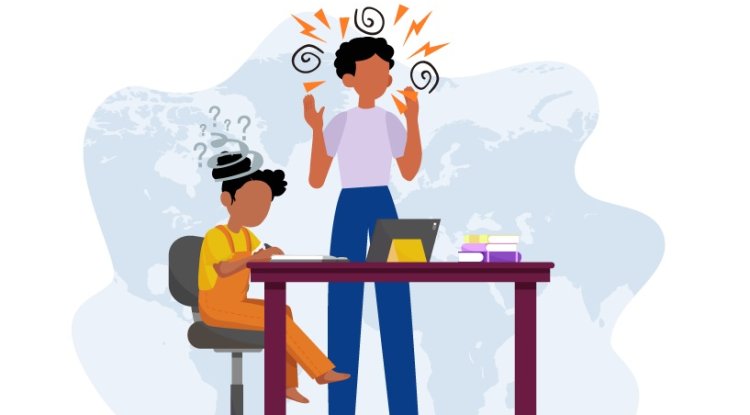Tips for Educators
5 Ways To Help A Child With Nonverbal Learning Disorder
- May 2, 2022
- 0
- 2429

The recent revelation of Chris Rock’s NVLD diagnosis has flooded the internet with numerous articles about the disorder, its signs and treatment. As a result, people have become more aware and receptive toward people with Nonverbal Learning Disorder (NVLD), a learning disability that affects a person’s motor, social, visual and spatial skills. According to a paper published in 2020, 2.2 million to 2.9 million children and adolescents may have nonverbal learning disability. Children diagnosed with NVLD face difficulty picking up social cues and are unable to grasp abstract and subtle concepts. They often have trouble judging distance, shapes, body language, idioms and sarcasm.
NVLD can pose numerous challenges to children, including social, verbal, memory, academic and emotional issues. Be it tracking a student’s progress, educating other staff about NVLD, or preventing bullying, teachers play a defining role in helping NVLD students adjust to a mainstream setting in learning environments. In this article, we will discuss five ways you can help students with NVLD excel academically.
1. Educate Yourself and Others
Learning more about NVLD is the first step to take when dealing with students struggling with this disorder. Educate yourself about NVLD, symptoms of worsening conditions and available therapies. Learn what triggers the student and convey this to other students. You can also give assignments that require research about NVLD to help a student’s peers understand the disorder better. Organise educational workshops for parents and create social media forums to spread the word. Students with NVLD are prone to depression and anxiety issues. Arrange school counselling services to help them deal with frustrations to ensure a safe learning environment.
2. Carry Out Role Plays To Demonstrate Social Skills
Children diagnosed with NVLD find it difficult to build relationships and cannot understand gestures and non-verbal language. Role-play helps in such cases, as they reveal inappropriate phrases and body language. You can enact basic conversations like introductions or ordering something at a shop. Teaching your students how to read different faces and emotions (anger, happiness, sadness, confusion) using visual aids is another useful tip.

3. Promote Self-Esteem With Task-Specific Praises
Boosting self-confidence is really important when helping NVLD children improve their social skills. However, comparative or vague praises aren’t the way to go. Always be specific while praising NVLD children. This will display how attentive you are and thus, keep them motivated.
Instead of saying “good work” when they solve a math problem, tell them if their calculations have improved or if their retention power has increased. You can also adopt a visual reward-based system to teach them basic tasks like taking out the trash, watering plants and finishing homework. Give them badges or stars when they complete a task.
4. Foster Curiosity To Encourage Participation and Active Learning
NVLD goes well with passive learning, but that is not healthy in the long-run. It’s important to promote active learning as it helps students with NVLD gradually step out of their comfort zones and engage better in the learning process. Sparking curiosity within a NVLD student goes a long way in achieving this outcome. Instead of directly providing solutions to your students, ask them questions. Let them explore options, analyse and come up with answers.
5. Hone Organisation Skills With Focus On Space and Time
Managing time and understanding spatial concepts can be frustrating for NVLD-diagnosed children. However, you can use the following tips to structure their learning better.
- Time - Create short schedules or routines. This could be doing homework at a particular time or allotting different time durations for sub-tasks within one project. You can also collaborate with parents to expand this into a full-day routine for enhanced productivity.
- Space - Assign tasks like organising books on a shelf, creating shapes or writing letters on graph paper. You can use visual aids like labels to remind them what goes where in case the activity gets overwhelming.
Teaching a student with NVLD can be hard if you don’t make an effort to understand them. Find out their hobbies and preferences, and create ways to improve their lacking skills using this information. For example, if the student loves stories, use picture books to help them create visuals in mind while reading.
A teacher is like a parent at school, and your support can do wonders in shaping a student’s personality. This is especially true in the base of children with NVLD. Don’t forget to cut them some slack, be clear with your explanations, and break down large assignments.
Add Comment
Related Blogs

Tips for Educators
5 Steps To Practice Emotional Intelligence While Teaching
- James Coop...
- Dec 15, 2021
- 0
- 2004
Popular Blogs

Tips for Educators
3 Tips To Apply Classical Conditioning In Classrooms
- Natasha Di...
- Apr 25, 2022
- 0
- 21374

Understanding Concepts
4 Reasons Why Skill-Based Learning Is Important For Students
- James Coop...
- Mar 14, 2022
- 0
- 10925

For Parents
Everything You Need To Know About STEAM Education As A Parent
- James Coop...
- Mar 1, 2022
- 0
- 10684












